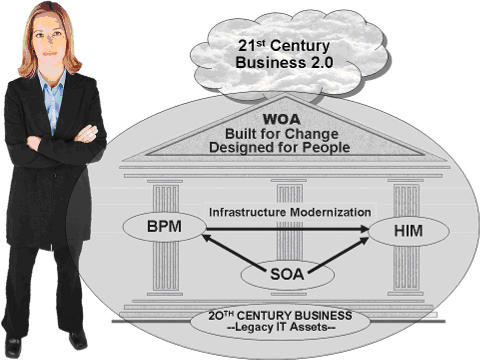Erik Weihenmayer is an acrobatic skydiver, long distance biker, marathon runner, skier, mountaineer, ice climber, and rock climber. Erik graduated from Weston High School in Connecticut in 1987. As the school’s wrestling captain, he represented the state in National Freestyle Wrestling Championships. In 1991, he graduated from Boston College, and in the same year, he trekked in the Pamir Mountains of Tajikistan. In 1993, he received a master’s degree in Middle School Education from Lesley College, and in the same year, he joined the staff at Phoenix Country Day School as an instructor, and made time to cross the Batura Glacier in the Karakoram Mountains of Northern Pakistan. He has also met the mountaineer’s challenge by successfully climbing the Seven Summits (the highest mountains of each of the seven continents), reaching the summit of Mount Everest on May 25, 2001. He is also author of Touch the Top of the World.
There’s no doubt that Erik is a pioneer. Yet, as amazing as Erik’s many achievements are, he’s just an ordinary kind of guy from Connecticut. But, he’s an ordinary guy who knows about vision and about assembling the tools and systems needed to go where no ordinary man has gone before. His secret to being a true pioneer seems to be his ability to bring together new tools and techniques in unique ways to solve previously intractable problems. He is driven by a vision greater than day-to-day goals. To Erik, vision is an internal compass showing us how we want to impact the world, what kind of legacy we want to leave behind. It’s the bigger vision that our goals spring from, especially as we go through times of adversity in our lives and our daily work.
With the adversity businesses face today -globalization and commoditization- do You have a vision for making a difference, for contributing to the continuing success of your company? With the Holy Grail of continuing business success being innovation, how can you contribute, how can you make a difference? What new systems and techniques can you marshal together to reach the innovation summit?
Pioneers in business today realize that innovation is no longer a singular affair of internal R&D. They are embracing open innovation and peer production, going outside the firm to innovate and produce value – recognizing the wisdom of crowds and why the many are smarter than the few. Proctor and Gamble has the stated goal that 50% of its innovations will come from outside the firm by 2010. In 2006, IBM’s Innovation Jam went outside to tap 350,000 worldwide employees, clients and business partners to collaborate on the next phase of innovation. The results were an investment of $100 million for the top-30 innovation ideas. It’s no longer innovation-as-usual in the world of business.
You may be thinking, oh my, my company could never make such investments, or go so far out of the box and into the clouds, into the new frontier of open innovation. But it could, and must if your company is to remain relevant.
How?
You’ve no doubt been tracking the latest hype in I.T. called Web 2.0, a new platform where all sorts of systems, tools and techniques can be marshaled together to go where no Web site has gone before. No, it’s not new Internet technology, as Tim Berners-Lee would quickly tell you. But Tim O’Reilly would counter with, “Web 2.0 is the network as platform, spanning all connected devices; Web 2.0 applications are those that make the most of the intrinsic advantages of that platform: delivering software as a continually-updated service that gets better the more people use it [e.g. Wikipedia], consuming and remixing data from multiple sources, including individual users, while providing their own data and services in a form that allows remixing by others, creating network effects through an ‘architecture of participation,’ and going beyond the page metaphor of Web 1.0 to deliver rich user experiences.”
In other words, Web 2.0 is not based on a technology shift, but rather a usage paradigm shift. That shift has come about largely by the very simplicity of use, call it Consumer I.T., if you will. You don’t need to write even one line of code to participate in Facebook, YouTube, MySpace, Second Life, Wikis of all manner, blogs, or Google Apps. And, the more these easy-to-use services get used, the better they become, the more value they deliver to the users – one Web 2.0 slogan is “Data is the Intel inside.” In short, Web 2.0 provides a platform where everything is a service, not an application or software code. Which then leads to the question, “Why is Consumer I.T. so simple and Enterprise I.T. so complex?” Answering this question is how you can become a pioneer in your company.
If you can build a vision of an agile and innovative company, and show how to interweave the easy-to-use Consumer I.T. and complex Enterprise I.T. systems, tools and techniques to go where neither has gone before, you’ll become a true pioneer. But you’ll need a framework for showing how it all fits together: your existing I.T. assets, service-oriented architecture (SOA), business process management (BPM), and human interaction management (HIM) combined to bring your enterprise to the Web 2.0 table through a Web-oriented architecture (WOA).

Remember that in today’s wired world, business success absolutely depends on innovation. And it’s not just a single innovation, it’s about setting the pace of innovation in your industry.
Also remember that in today’s wired world, business innovation goes hand in glove with I.T. innovation. The good news is that now you have all pieces, systems, tools and techniques at your disposal for Innovation 2.0. Even better, with Web 2.0, most of those tools are simple Consumer I.T. platforms, and most provide sandboxes so that you and your company won’t get hurt while experimenting (playing).
So, now all you have to do is create the vision of your 21st century company, and set your day-to-day goals accordingly, as Erik Weihenmayer prescribed in the opening of this article. If you don’t, you and your company will get left behind in history’s global dust bin.
Whoa, WOA! Sound too intimidating, especially if you work in a large company and don’t really consider yourself a pioneer?
Intimidating?
Oh, I forgot to tell you that Erik has been blind since age 13.

















